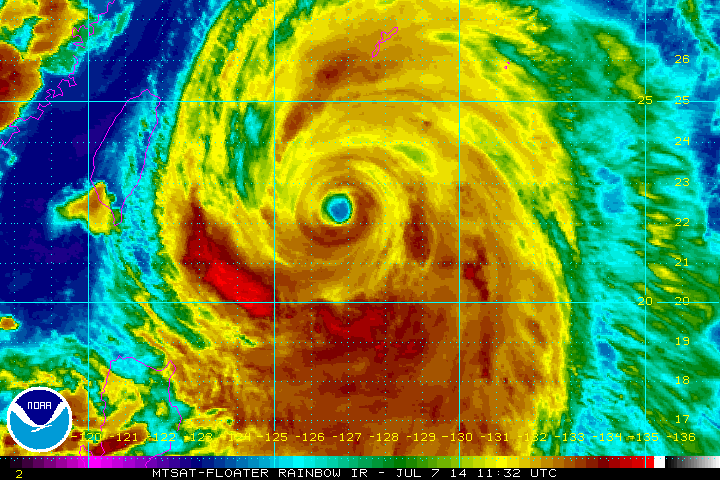

As Okinawa and Kyushu prepare to take the brunt of what was until Monday categorized as a “super typhoon,” local infrastructure will be pushed to its limits, especially in Kyushu, where the area is saturated from heavy rains last week. — The Diplomat
Typhoon Neoguri is the strongest typhoon of the 2014 season, thus far. As it barrels through the Ryukyu island chain and towards mainland Japan, the storm is already taking its toll. Reports claim 25 people have been injured, thousands are without electricity, and 540,000 have been ordered to evacuate to temporary shelters.
Japan is particularly vulnerable as it struggles to recover from the tsunami that led to the catastrophic Fukushima Daiichi nuclear reactor meltdown in 2011. While new national policies have temporarily shut down other nuclear facilities, apparently three are currently at risk from Typhoon Neoguri.
Scientists believe that hurricanes and typhoons will continue to increase in severity as global warming raises ocean temperatures. Maintaining aging infrastructure systems will become increasingly difficult in the next few decades, particularly for countries with extensive coastlines. And without them, providing adequate shelter and resources to temporary climate refugees will be nearly impossible.
No Comments
Block this user
Are you sure you want to block this user and hide all related comments throughout the site?
Archinect
This is your first comment on Archinect. Your comment will be visible once approved.